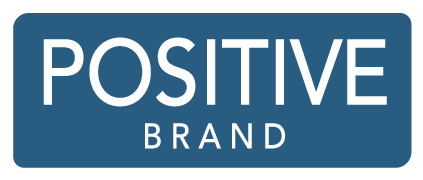A
n engagement strategy is an idea-driven solution inspired by the critical information you have assembled. It takes everything you know about your customer, their interests, and their media consumption habits and brings focus to those insights. Ideas for driving your engagement strategy are as numerous and diverse as the problems they solve.

To begin, here are five engagement strategy idea starters:
The One Thing Strategy. One approach to an engagement strategy is determining the one thing that will resonate with your customers and will be relevant to your brand. For example, you may determine that your brand of data security is fast and furious, so you focus your brand engagement on all things adrenaline.
Volkswagen adopted this strategy with their Fanwagen. Their focus on being fun, hip and cool went into creating a fun, hip, and cool vehicle that integrated everything fun, hip, and cool about social media into retro models of their Beetle and VW Bus. The Fanwagen featured a Facebook newsfeed printer built into the dashboard, relationship status posted on the license plate, and even a camera with a wall for posting photos. The Fanwagen was one-of-a-kind. Anyone could be entered for a chance to win it just by Liking Volkswagen on Facebook.
The Zealot Strategy. Another approach is to make your brand accessible to the crowd and solicit their input, ideas, trial, and feedback. For example, you may make fishing lures, so you engage your customers on the topics of tricks of the trade, innovations, etc.
Tourism Queensland adopted this approach when they embarked on a global search to find an Island Caretaker to explore the Islands of the Great Barrier Reef in Queensland Australia and report back to the world about their experiences. They touted the opportunity as “The Best Job in the World” and turned their blogger recruitment campaign into a massive awareness campaign fueled by the interests of travelers and spread through each of their social media networks as they attempted to blog their way into their dream job.
The Guru Strategy. Another approach is to position the brand as the industry leader or innovator. Whitepapers, blogging, opinion pieces, etc. are developed to express thought leadership to your customers that are interested in following your lead. For example, you are a financial services company, so you engage your audience with webinars on investing and whitepapers on diversification strategy, etc.
Merrill Lynch did exactly that when they created the Merrill Lynch Advisors. The $20 million campaign, dubbed “The Power of the Right Advisor” is built on several key issues that Merrill executives noted over the past year of research. Retirement is still No. 1 on consumers’ minds, but so are liquidity, balancing demand and understanding risk. Merrill Lynch followed this with a launch of its first YouTube channel, with its own webcasts and panel discussions with experts on subjects such as retirement.
The Gaming Strategy. Play with your customers. Develop contests, promotions, games, loyalty program, etc. Fast-food chain Burger King has created “Whopper Sacrifice,” a Facebook app that will give you a coupon for a free hamburger if you delete 10 people from your friends list.
The funniest part: The “sacrifices” show up in your activity feed. So, it’ll say, for example, “Caroline sacrificed John Smithson for a free Whopper.” Unfortunately, you can’t delete your whole friends list and eat free for a week. The promotion is limited to one coupon per Facebook account. Facebook ended the promotion early because too many people were becoming unfriended as a result of this promotion.
The Exclusive Content Strategy aka The See It Here First Strategy. In this case, you have a valuable asset in the form of original content that you’ve created for your brand. That content may be an entertaining video featuring a comedian spokesperson, or it is original music performed by a popular band, or it’s never before released photography documenting a subject of interest.
Not long ago, Tom Tom used Monty Python comedian John Cleese to lure people into Liking the Tom Tom Facebook page. A two-minute video featuring Cleese appeared on streaming video sites. In the video, Cleese is dancing around a traffic jam. The spot ends with the invitation to see more John Cleese video at Tom Tom’s Facebook page. The trick is that if you want to watch the videos, you first must Like their page.
It’s not the size of the budget. It’s the size of the idea.
The key to making social media work for your brand does not lie in how much money you send on the execution of the strategy. The Whopper Sacrifice is evidence of that. What all these examples have in common is a big idea. A big idea that is at the heart of an engagement strategy. It’s the big idea that draws people in — that engages people. It’s the big idea that inspires people and creates buzz and compels people to share that idea with their friends.
Our clients turn to us for big ideas.
We started our company in 2004 with a promise to put the customer at the center of everything we do. We begin every assignment thinking big, thinking about how we can have an impact on society. How we can upset the status quo. How we can change someone’s life forever. How we can do the unthinkable to accomplish the impossible.
Talk to us today and find out how a Positive Brand mindset can move your business in a positive direction.
